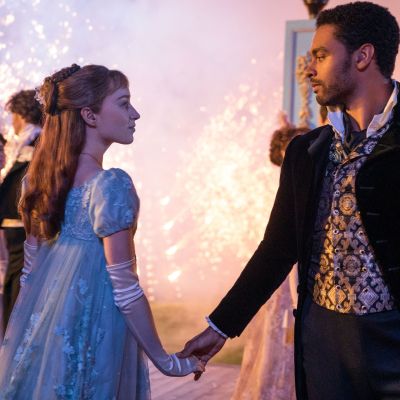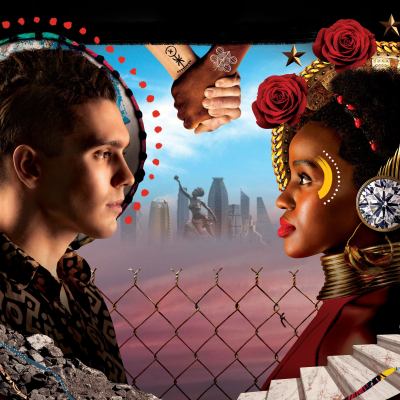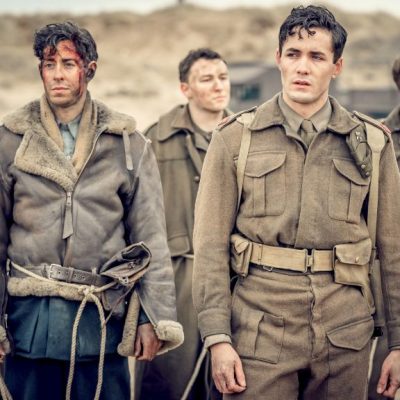From Bridgerton to Hamilton: A History of Color-Conscious Casting in Period Drama
Critics can keep attacking inclusive period dramas for being too "woke,” but series like Bridgerton are here to stay.
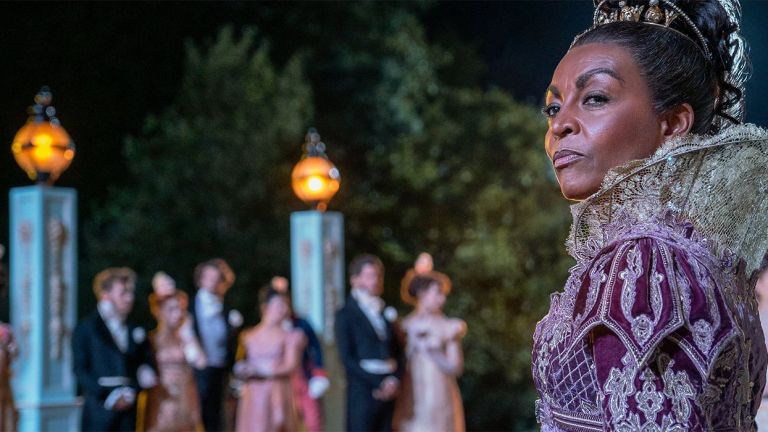
Note: This Bridgerton article contains no book or series plot spoilers.
Bridgerton is a unique mix of Shonda Rhimes’ dedication to Black representation on American television and the British period drama tradition. White critics may dismiss this trend as unnecessary “pandering” to Black and POC viewers, but the number of productions designed around reforming all white-casting has increased over the past 10 years—and has only added to the success of the genre. The number one reason driving demand for diverse period dramas is from Black and POC fans of the genre. The impact of seeing an actor that looks like you can’t be measured in ratings or clicks online. Despite facing years of content and fandom overtly or covertly claiming that the universal themes in period dramas are not “for us”; the tide is starting to turn as fans use social media and the power of ratings to ask for more representation.
A quick overview of recent Regency England-set productions leaves much to be desired. Although the 2018 Amazon Prime/ITV miniseries and the 2005 movie adaptations of Vanity Fair left in West Indian and Jewish heiress Miss Schwarz, she is one of many supporting characters. PBS/ITV’s Sanditon, on the one hand, improved representation by prominently featuring Georgiana Lambe. However, her story was a huge disappointment to Black and POC fans who expected her plotline to end happily or at least have her conflicts resolved.
There have been three paths traditionally towards increasing diversity in period dramas: 1) blind casting (also called racebending), where Black and POC actors play traditionally white characters adding original Black characters to existing fictional works, and 2) Own Voices, where Black and POC writers share their own stories. These two are not mutually exclusive, but, in the world of British period drama, the former is more frequently used, as the bedrock of the genre is adapting existing novels and plays by white authors.
The theoretical framework for inclusive casting begins in the world of staging period drama at the theater. In Shakespeare’s day, men played women’s roles as women were not allowed to appear on stage. The genre evolved in later centuries to allow women to appear on stage, but the tradition of having actors who didn’t match the original descriptions remained. This is even true of his history plays where real women royalty were characters. Ira Aldridge in the 1840s was the first Black actor in Britain to play traditionally white roles on stage. Later on, in the 19th century, several stage adaptations of Jane Austen’s works had all-women casts.
Fast forward to 2015, when Lin-Manuel Miranda in Hamilton redefined what it meant to cast inclusively in modern period dramas by using actors descended from slavery and colonialism to play the Founding Fathers. Every aspect of the musical was designed to reframe the existing narrative of early American history. The costume design also reflected the identities of the actor by featuring braids, locs, and textured hairstyles over 18th century white hairstyles. Rap lyrics conveyed to the audience the names, dates, and other descriptions of the Revolutionary War. The old adage that someone must “look the part” to play a biographical role was thrown out the window.
Hamilton proved that many of the old excuses used to sideline diverse period dramas no longer held to be true. Millions of white people listened to the cast album, brought tickets, or streamed the movie on Disney+. UK theater patrons flocked to the West End cast of Hamilton, as well, before the pandemic. Memes, parodies, and more on social media proved that white audiences can conceptualize historical figures as fictional characters while also knowing the real figures looked and acted quite differently. Fans of the show pushed Ron Chernow’s biography back onto the bestseller lists as they wanted to read what really happened.

The first clear impact the show had on the genre of British period drama comes from a mystery. Daisy Coulam, Grantchester’s head screenwriter, cited reading an interview with Miranda as the inspiration behind the exit plotline for James Norton’s character Sidney Chambers. UK crime dramas For those unfamiliar with the series, Grantchester is a mystery procedural based on a series of books about a 1950s crime-solving Anglican vicar by James Runcie. Norton’s exit plotline in Season 4 generated an original to the show character named Violet who was the daughter of a visiting African-American preacher. Violet was an original character who forced the audience to consider that the US civil rights movement indeed reached their treasured vision of the lily-white British countryside. Coulam already laid the groundwork for Violet in earlier seasons by abandoning large sections of the original novel timeline and but keeping the case of the week focused on addressing 1950’s social issues. Fans heavily criticized Coulam’s writing for style and pacing, but her imagination clearly indicates that Hamilton’s proven formula for disrupting established historical aesthetics can just as easily be applied to fictional depictions of the UK’s past as blind casting a biography-based series or depicting real figures of Black British history.
Other period dramas released in recent years share traces of Hamilton’s impact but in a more thematic and less direct different way. Some shows turned real Black British figures into fictional characters. Lina (Stephanie Levi-John) and Oviedo (Aaron Cobham) on The Spanish Princess are composites of Catherine of Aragon’s servants and several famous Black Tudors. Catherine “Kitty” Despard (Kerri McClean) in Poldark Season 5 was a forgotten Black British figure added in to expand the world outlined in the novels. Victoria featured Ira Aldridge (Ashley Zhangazha) mentioned earlier, plus spotlighted the Queen’s adopted daughter Sarah-Forbes Bonetta and Cuffay (C.J. Beckford) as the leader of the proto-socialist Chartists. Lucille Anderson (Leonie Elliott) on Call the Midwife was not mentioned in the original memoirs, but she was added to represent the Caribbean nurses from the Windrush Generation of UK immigrants.
Racebent casting also increased. Dev Patel’s role as the title character in the movie The Personal History of David Copperfield proved that Dickens adaptations could indeed include POC casts without changing the fundamental plot and message. PBS/BBC’s Les Miserables miniseries also extended the Broadway tradition of casting Black actors in traditionally white coded classic literature characters. Hulu’s The Great featured Sacha Dhawan and several Black actors as Russian nobility, politicians, and courtiers.
All of these series, however, carefully attempted to stay grounded in recreating the original source material or invested in faithfully replicating the era they were set in. Bridgerton radically expands upon Hamilton’s formula by divorcing inclusive casting from any desire to accurately recreate historical events, eras, or figures. Romance, fantasy, and social/familial drama are universal themes that don’t depend on having a white-dominant vision of society. Quinn’s original novel series sparingly referred to historical events during the Regency Era. Her focus was on creating a world where the most important events were balls and weddings. More Dukes and other holders of inherited titles exist in her vision of the Ton (the most elite members of Regency society) than in reality. Historians would likely dispute her characterization of the elite social season as well. Characters’ internal dialogue is in modern English peppered with regional accents and slang. They rarely lampshade or criticize the way of society beyond their romantic desires and family obligations. Readers see the physical intimacy on the page Austen never mentioned. This literary environment is ripe for inclusive casting on screen.
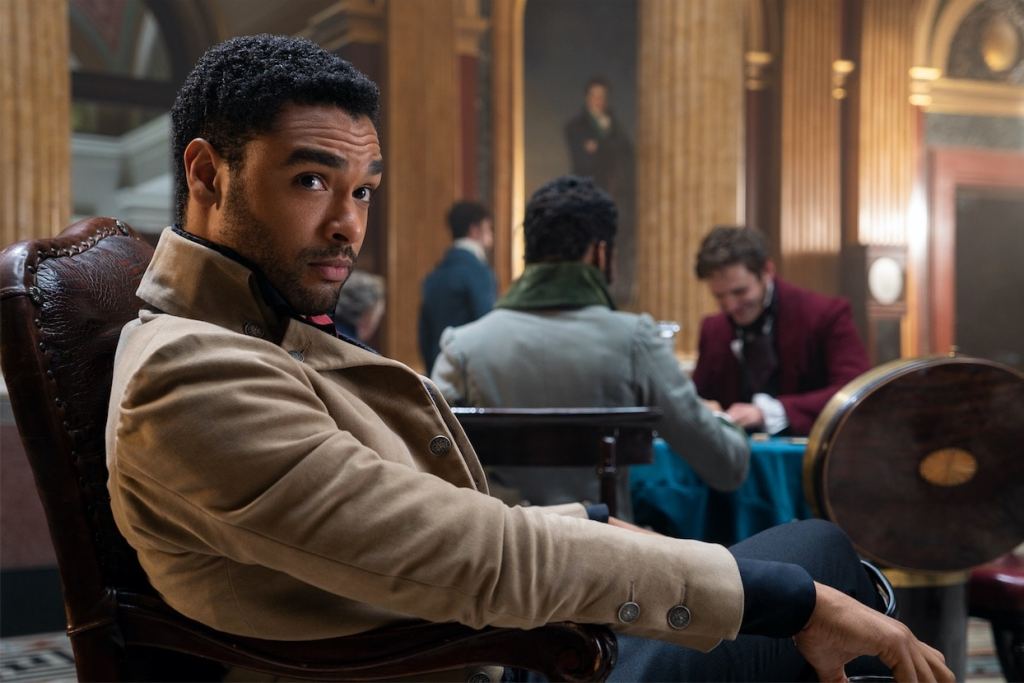
The most critical flip in characterization is Simon, Duke of Hastings (Regé-Jean Page). His character is the romantic hero of the first book in the series The Duke and I and is the character that set fan expectations high for future novels. Simon having visibly African features and yet being an object of desire is incredibly subversive in a genre where white beauty standards dominate hetero and homosexual fiction.
Lady Danbury (Adjoa Andoh), Simon’s godmother, is an elder stateswoman and a twist on the battle-ax aunt trope popular in period dramas. She isn’t as caustic and insulting as some other famous widows and spinsters but she commands authority and a mansion filled with people to perform all the hard labor. Lady Danbury is even implied to be slightly higher in status than her white counterparts with children of marrying age Lady Violet Bridgerton (Ruth Gemmell) and Lady Portia Featherington (Polly Walker).
Queen Charlotte (Golda Rosheuve) being played by a biracial woman is actually a subtle Easter Egg to existing history debates. Many have debated if her portraits were airbrushed to disguise African features. A few years ago, a documentary established her African ancestry is via the Portuguese royals. All of her scenes involve petting her Pomeranian, demanding to know the latest gossip, and manipulating the gentry into doing her bidding.
The miniseries doesn’t end the racial diversity with those at the highest social rank or even at the lower orders of domestic servants. Marina Thompson (Ruby Barker) is a cousin of the Featheringtons and represents the “poor relation” character popular in stories based on the British gentry. A Black modiste (dressmaker) trained in French fashion makes all of the dresses the characters wear. Will Mondrich (Martins Imhangbe) is a boxer, likely a reference to former slave turned bare-knuckle boxer Bill Richmond. Alongside the characters with plot lines viewers follow, there is a conscious effort to hire Black and POC extras to fill in crowd scenes at balls, park scenes, and other public events. The viewer sees people who look like themselves in every class level of society and can feel like they too can become part of their world.
Attire is a critical part of upholding the fantasy and cultural diversity Bridgerton and also in communicating to the audience the series isn’t your aunt’s neutral tone Austen adaptation. Marina and Lady Danbury would never be caught dead in a plain white muslin frock. All of the popular Regency hairstyles for women have been modified and reworked for natural textured hair, braids, and locs. Some of the Black male extras even have modern African hairstyles left in tact. The only Black characters who wear the traditional white wigs are older men or servants in full formal uniform. Queen Charlotte’s Black courtiers and servants wear a mixture of extravagant 1770s and 1780s attire and Regency court wear to create a physical separation between them and the rest of the ensemble cast. These style decisions are right out of the playbook of Still Star-Crossed, Shondaland’s first foray into period drama. Although that series took place in 1300’s Italy, the priority was on blending fantasy and Black fashion aesthetics over catering to white costume enthusiasts and reenactors.
In the world of Bridgerton, slavery and colonialism are directly or indirectly referenced exceedingly sparingly. One reference is to Lord Dunmore’s army of emancipated and runaway slaves during the Revolutionary War proclamation. (Hercules Mulligan’s Black troops referenced in “Stay Alive” is the Patriot equivalent of Dunmore’s forces). These sparing hints make it clear to the viewers that class, family, and personal family drama is the root cause of joy and pain in this series.
Since Bridgerton is completely ignoring the physical descriptions of the characters in many cases, the set design carries the bulk of the attention to historical detail. The series hired Dr. Hannah Greig as a historical advisor to ensure these details were as close to 1813 as possible. Greig has previously acted as a consultant to the Sanditon, Poldark, and The Duchess cast and crew is likely where the Easter Eggs in character references come from. Lavish mansions and castles and the more humble spaces ground the fantastical plot details in historical reality. Several previous period dramas have recreated the Vauxhall Pleasure Gardens, but these scenes in the miniseries are elevated to the next level thanks to Netflix’s budget.
The success of Bridgerton applying color-conscious casting to a fantasy/romance series has implications far beyond potential future seasons. Studios especially those in the UK have been hesitant to utilize recent historical romance books for screen adaptations. Modern historical fiction by Black and POC authors (called Own Voices fiction) which is crucial in the fight for increased representation. Novelists such as Beverly Jenkins, Courtney Milan, and Alyssa Cole have written romances set in the Regency and other eras of American and British History that can easily be transformed into movies and miniseries. Some of these novels recreate existing history while others lean into escapist fantasy. The ultimate goal in period drama representation is for Black and POC creatives to tell their own stories covering all the ranges of emotion, not just historical trauma.
Critics can keep attacking period dramas for being “too woke” (a term that was stolen from anti-racism activists) for remembering that white people aren’t the only inhabitants of the British Isles and America, but series like Bridgerton are here to stay. Black and POC viewers and readers of period drama and romance fiction always existed, and viewership will only grow if more inclusive period romance projects are greenlit in the future.

